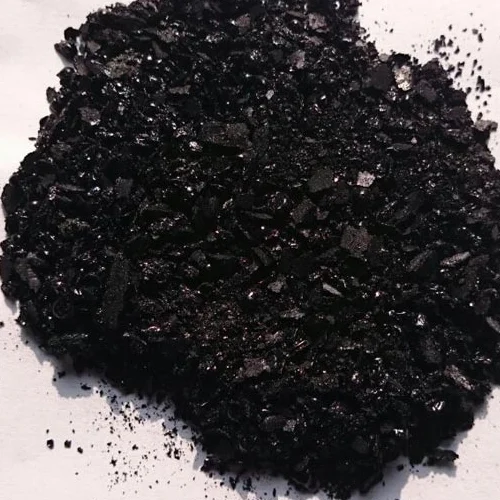indigo powder dye
Indigo powder dye, derived from the leaves of the indigofera plant, has a rich history and cultural significance that stretches back thousands of years. Revered for its deep blue hue, indigo has been used in various parts of the world for dyeing textiles, particularly in regions like Asia, Africa, and the Americas. Its natural origin and the vibrant color it produces make it a popular choice among artisans and environmentally conscious consumers today.
The process of making indigo powder dye begins with harvesting the leaves of the indigofera plant. These leaves are subjected to a fermentation process, which helps to convert the indican present in the leaves into indigotin, the compound responsible for the dye's blue color. After fermentation, the solution is oxidized, causing a precipitate to form. This precipitate is then dried and ground into a fine powder, ready for use in dyeing fabrics.
One of the remarkable aspects of indigo dyeing is the unique way it interacts with fabrics. Unlike many synthetic dyes that require a mordant to fix the color, indigo dye works through a process called reduction dyeing. During this process, the fabric is submerged in a solution of reduced indigo, resulting in a light greenish-yellow hue. Once the fabric is exposed to air, the dye oxidizes and turns into a brilliant blue. This phenomenon is part of what makes indigo dyeing so fascinating, as it allows for a variety of shades and effects to be achieved based on the dyeing technique used.
Indigo's historical significance cannot be overstated. It played a vital role in trade and culture, especially during the 17th and 18th centuries. European colonists sought the dye for its quality and durability, leading to the establishment of indigo plantations in places like the American South and the Caribbean. Interestingly, the blue dye also became associated with social status and wealth, further embedding it into the fabric of history.
indigo powder dye

In contemporary society, there is a growing interest in natural dyes as people become more eco-conscious. Research into sustainable dyeing practices highlights the benefits of using indigo. Not only is it biodegradable and less harmful to the environment than synthetic dyes, but it also boasts antimicrobial properties, making it suitable for various applications. Many fashion designers and textile artists are embracing indigo powder dye, incorporating it into their collections to create unique, handcrafted pieces that tell a story.
Indigo powder dye also holds a special place in traditional crafts. In countries such as Japan and India, the art of indigo dyeing has been passed down through generations, with artisans using skills honed over centuries to produce stunning fabrics. Techniques such as shibori (a Japanese tie-dye method) and Bandhani (a Rajasthani technique) showcase the versatility of indigo, highlighting both its aesthetic appeal and cultural heritage.
Overall, indigo powder dye represents much more than just a coloring agent; it embodies a rich tapestry of history, tradition, and modern sustainability. As more people seek to connect with their roots and choose responsible fashion alternatives, indigo powder dye continues to rise in popularity, ensuring that its legacy endures in the realms of art, culture, and textile production.
-
The Timeless Art of Denim Indigo Dye
NewsJul.01,2025
-
The Rise of Sulfur Dyed Denim
NewsJul.01,2025
-
The Rich Revival of the Best Indigo Dye
NewsJul.01,2025
-
The Enduring Strength of Sulphur Black
NewsJul.01,2025
-
The Ancient Art of Chinese Indigo Dye
NewsJul.01,2025
-
Industry Power of Indigo
NewsJul.01,2025
-
Black Sulfur is Leading the Next Wave
NewsJul.01,2025

Sulphur Black
1.Name: sulphur black; Sulfur Black; Sulphur Black 1;
2.Structure formula:
3.Molecule formula: C6H4N2O5
4.CAS No.: 1326-82-5
5.HS code: 32041911
6.Product specification:Appearance:black phosphorus flakes; black liquid

Bromo Indigo; Vat Bromo-Indigo; C.I.Vat Blue 5
1.Name: Bromo indigo; Vat bromo-indigo; C.I.Vat blue 5;
2.Structure formula:
3.Molecule formula: C16H6Br4N2O2
4.CAS No.: 2475-31-2
5.HS code: 3204151000 6.Major usage and instruction: Be mainly used to dye cotton fabrics.

Indigo Blue Vat Blue
1.Name: indigo blue,vat blue 1,
2.Structure formula:
3.Molecule formula: C16H10N2O2
4.. CAS No.: 482-89-3
5.Molecule weight: 262.62
6.HS code: 3204151000
7.Major usage and instruction: Be mainly used to dye cotton fabrics.

